
The flag at the University of Toronto’s Simcoe Hall has been lowered today, March 31, to honour the remarkable contributions of alumna Joan Johnston, SMC 6T8.
Appointed to the University of Toronto’s Governing Council in 2019, Johnston (nee Harrison) was one of the first women to serve on Collegium, St. Michael’s governing body, holding an appointment of alumni assessor for a term running from 1980 to 1983. She was a member of St. Michael’s Alumni Board from 1978 to 1986 and was elected President of U of T’s Alumni Association in 1983. She also shared her extensive talents with Sheridan College, where she served on the board for six years, including as Chair of the board.
Her extraordinary contributions to university life led to her being awarded an Arbor Award from U of T in 1991.
Predeceased by her husband Richard in 1993, Johnston’s impressive career included time as a vice president at Young & Rubicam, as a corporate manager at BMO, and a principal at Ernst and Young. In time, she started her own firm, J.M. Johnston & Associates.
The St. Michael’s community offers our condolences to Johnston’s family and expresses our gratitude for her generous sharing of her talents with the university. A candle will be lit in St. Basil’s Church in memory of Johnston and in gratitude for her service.
The St. Michael’s community is mourning the loss of a very special member of the alumni family, Victoria “Vicky” Houghton (Class of 1949). Houghton was a dynamic figure during her time on the St. Michael’s campus. While playing “every sport she could access,” she was named St. Michael’s first-ever “Female Athlete of the Year,” an honour that may have been created specifically in response to her achievements. Below is a story from the Spring 2019 issue of St. Michael’s Magazine about how Houghton came back to St. Michael’s in 2018 to return a very special piece of the College’s history.
A Piece of History Comes Back to St. Mike’s
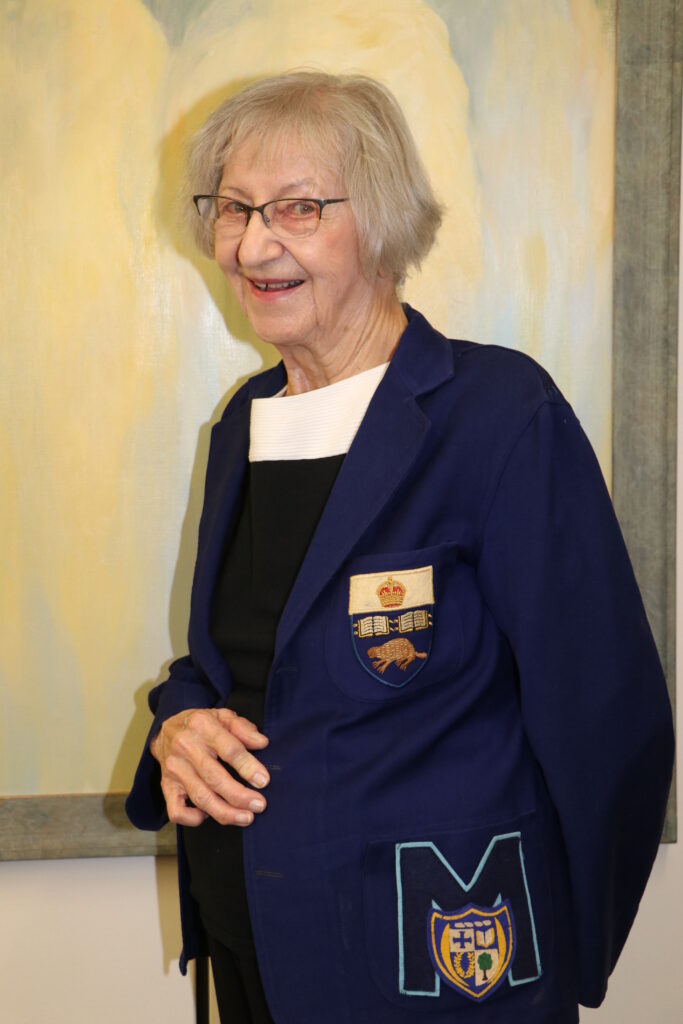
When St. Michael’s alumna Vicky (Baechler) Charron Houghton (Class of 1949) went through her closet on a fall Sunday in 2018, her hand fell across a keepsake from her undergraduate days: a U of T blazer festooned with athletic patches. Feeling mischievous, she sent a photo of the jacket to her family and told them she intended to auction it off to one of them, with bids starting at $30. Her children accepted the challenge, and her daughter Mary opened bidding. When her son John countered with a $40 bid, the game was afoot. The playful competition offered a fitting tribute to the achievements that earned Charron Houghton the jacket in the first place.
Her student days were far from ordinary. She was a standout athlete committed to trying every sport she could: volleyball, basketball, softball. She played hockey for one year as well, but was forced to use figure skates because that’s all she had at the time. “That’s why I only played for one year,” she says, laughing. She was the only player on the ice to play with that disadvantage.
Hockey misadventures notwithstanding, Charron Houghton’s athletic prowess brought her to the attention of the SMC Athletic Society, which in 1949 named her the first-ever Female Athlete of the Year at St. Michael’s College. The Society prepared an unusual token in honour of the award: a sterling silver spoon. “Maybe they just decided to do it at the last minute,” Charron Houghton muses. The spoon is engraved on the handle and the basin with her name, the school year of the award and the SMC crest—the midcentury design of which is reflected in the school’s current logo. The unique award is a hit with Charron Houghton’s family. “I’ve shown the spoon to my grandchildren more than I have the blazer,” she says.
Charron Houghton studied liberal arts at St. Michael’s during the 1940s, a very interesting period in the school’s history. She took numerous English and Latin courses, and after her graduation kept in touch for many years with her Latin professor, Sr. Blandina Hitchen, CSJ (who was also Dean of St. Joseph’s College, 1948-1953).
She recalls the Sisters of St. Joseph teaching most of her English courses, and she took at least one class with SMC celebrity Marshall McLuhan. She did not find the media theorist’s teaching very impressive, but suggests McLuhan may simply not have been interested in psychology, the subject of the course.
Charron Houghton’s husband, Doug Charron, also attended St. Michael’s during the same period, and he lived in House 2 under the donship of Fr. John Kelly. Charron Houghton remembers hearing stories of Fr. Kelly practising his sermons and singing in the house. Though he was an effective speaker with a pleasant-sounding voice, he also had the gift of powerful volume, which sometimes surprised the boys who happened to be in the building during his rehearsals.
After a few rounds of bidding among her children and some back-and-forth conversation about where the garment should go, Charron Houghton’s daughter Anne finally won the auction, and she promptly approached USMC Alumni Affairs to see about making it a donation to the College archive. The response from the school was immediate and enthusiastic, and not long after, Charron Houghton came to St. Michael’s with the jacket in hand. Over the course of an afternoon, she met with St. Michael’s President David Sylvester, University Archivist Jessica Barr, then–Alumni Affairs Director Leslie Belzak and Dean of Students Duane Rendle to share stories of her time at the school, all while the group looked at related memorabilia from the period.
The blazer was on display with some of those other items for this year’s Spring Reunion (May 30–June 2), during which the College also celebrated a remarkable milestone: the 70th anniversary of Charron Houghton’s graduation from St. Michael’s.
Online condolences can be made at www. turnerporter.ca.
St. Michael’s and University of Toronto Professor Emeritus Gino Matteo passed away this week. A member of the SMC Class of 1959 and Director of the Alumni Association at SMC from 1966 to 1968, Prof. Matteo was heavily involved at St. Mike’s throughout his life. Below, Interim Principal Mark McGowan remembers Prof. Matteo’s legacy.
Professor Gino Matteo spent much of his life at St. Michaels College. He was in the SMC class of 5T9, and then undertook graduate work in English. He returned to the SMC Department of English, where he taught alongside one of his mentors, Marshall McLuhan. A specialist in Shakespeare, and in 1974 he published Shakespeare’s Othello: The Study and the Stage, 1604-1904, which was based on his doctoral dissertation. His interests in English literature were not restricted to the Elizabethan period, but his fascination with Nell Gwyn, longtime mistress of King Charles II, inspired him to write a stage play which earned him top honours for a playwright at the Moon Dance Festival in Boulder Colorado. Gino also was interested in film and media and was one of the directors of the Cinema Studies program, then based out of Innis College. Despite this secondment across campus, he always kept his office in Elmsley Hall. Gino and I met when I first arrived at St. Mike’s in 1991. When he discovered I lived in Whitby, he wanted to know if I had ever visited Dom’s Auto Wreckers in Oshawa—Gino, I discovered, was an antique car buff and made frequent pilgrimages there for parts for the classic cars he was rebuilding.
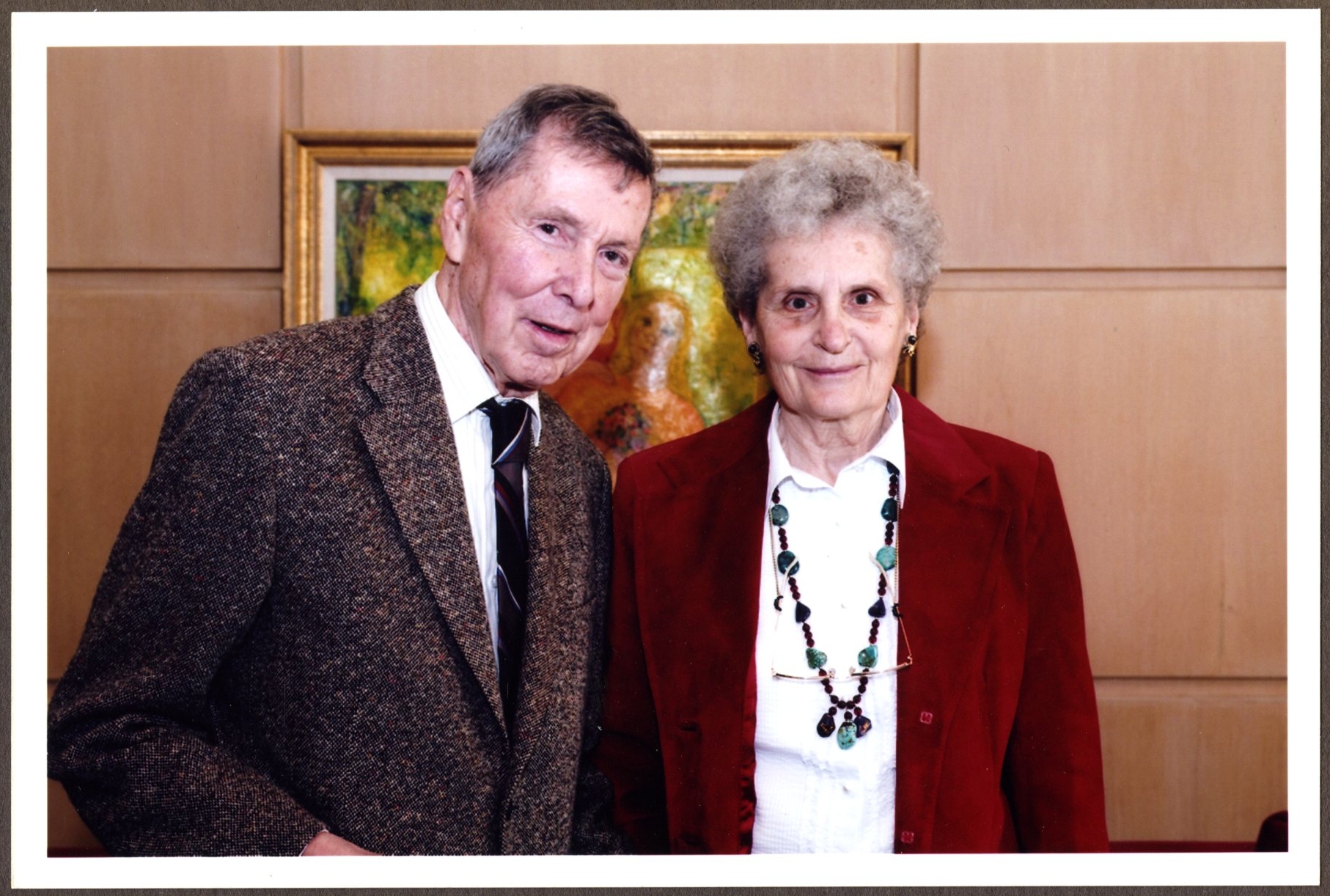
Friends, colleagues, and former students are remembering Professor Emerita Janine Langan as a woman deeply devoted to her faith, family, academics, and students. Dr. Langan, who founded St. Michael’s Christianity and Culture Program, died suddenly on Saturday, December 11, 2021 in Toronto. She was 88.
A native of France, Dr. Langan received her first degree at Smith College in the United States, followed by further studies in France, and then a PhD in Comparative Literature from the University of Toronto. She was particularly noted for her course on the Book of Job and the question of why innocents suffer.
“She was indefatigable in her work to promote the study of Christianity from a variety of academic perspectives and in 1979 she lobbied SMC and founded the Christianity and Culture Program,” recalls Interim Principal Mark McGowan, who met Langan when he arrived at St. Michael’s in 1991 to teach. Dr. Langan served as the program’s coordinator from 1979 to 1987.
“She gathered a multidisciplinary teaching cadre which included her husband Thomas, who was in the SMC/UofT Philosophy Department, and Dr. Kenneth Schmitz, a fellow philosopher from Trinity College,” says McGowan.
Describing Langan as possessing “a forceful but charming personality” he says that she “laboured tirelessly for her fledgling program.
“Above all she was dedicated to her students and founded a club called the St. John Scholars, where students could deepen their studies in Christianity through service, retreats, and travel (to Rome,)” he notes. “Janine particularly loved for her students to access Christianity through art, and I remember her long conversations with Henri Nouwen, with whom she shared a love of Van Gogh. She invited Nouwen to teach several guest lectures in the program.”
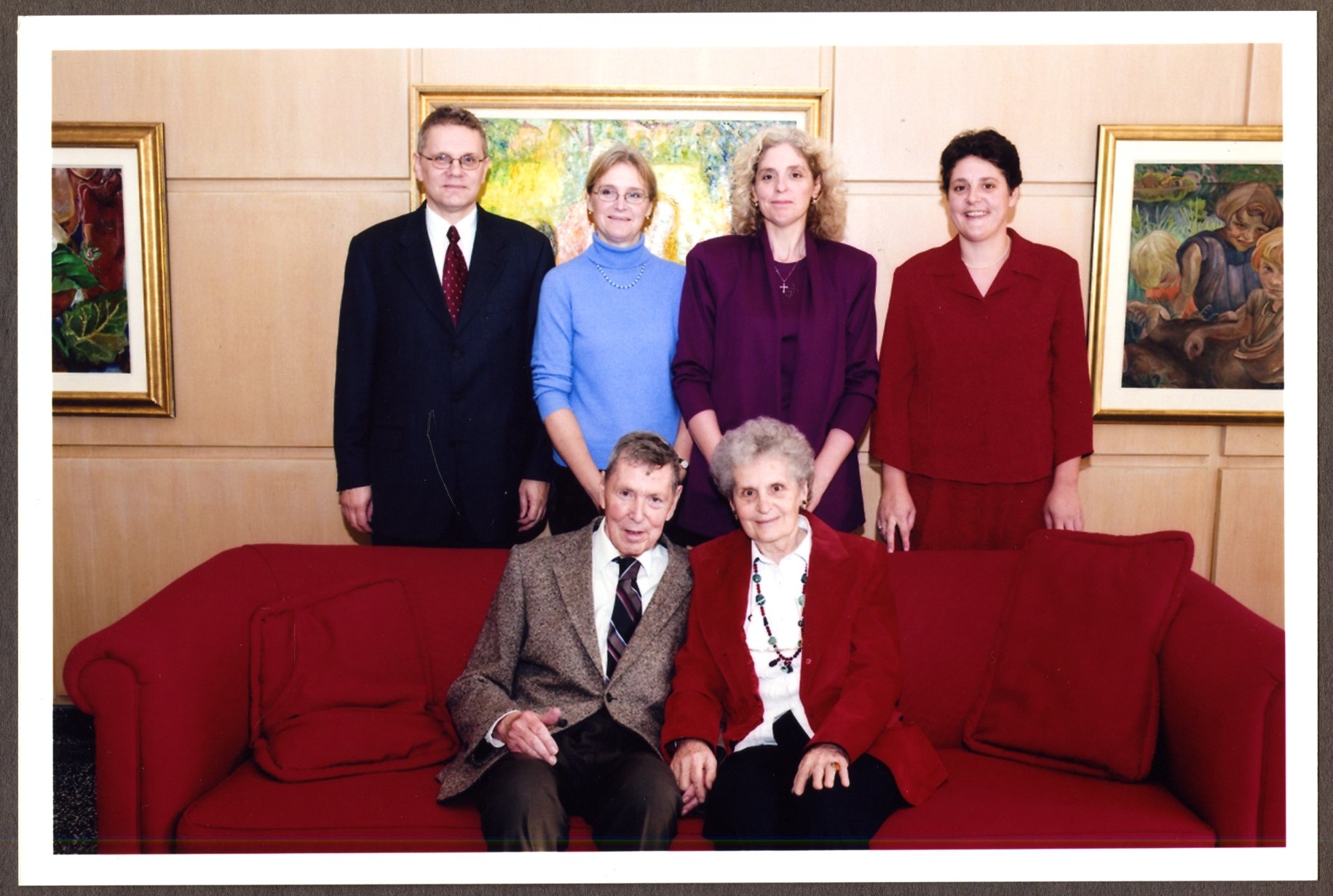
For colleague Dr. Giulio Silano, who taught alongside Langan in the Christianity and Culture Program, “what remains is the irreducible originality of her vision for C&C.
“Against the dominant trends in Catholic institutions of higher learning of programs that presented lay people with dumbed down versions of programs meant for clerics, Janine devised a program that took seriously the call of the laity to holiness and so began with the requirements of the lay state,” he says. “Her insistence that the artistic, literary and historical dimensions trumped the easy theological option so often taken by other institutions has proven difficult to maintain in its integrity against the easier option, but it retains its intrinsic originality and fascination.”
Daughter Claire Langan describes her mother’s approach to teaching as “a true vocation, and one that went beyond the traditional four walls of the classroom.”
Adding that her mother’s students weren’t just those enrolled at St. Michael’s but pretty much anyone she encountered, from priests and seminarians to lay people of all ages, Claire recalls her mother regularly opening the family home to discussion groups for a variety of people.
“It was wonderful that St. Mike’s facilitated the creation of this program. My mother was dedicated to passing on God to the next generation,” she says.
Alumna Joe-Anne Boyle, a Christianity and Culture graduate from the early 1990s, describes the program as “introducing people to the treasures of the Church. It awakened the spirit of the Church for people.”
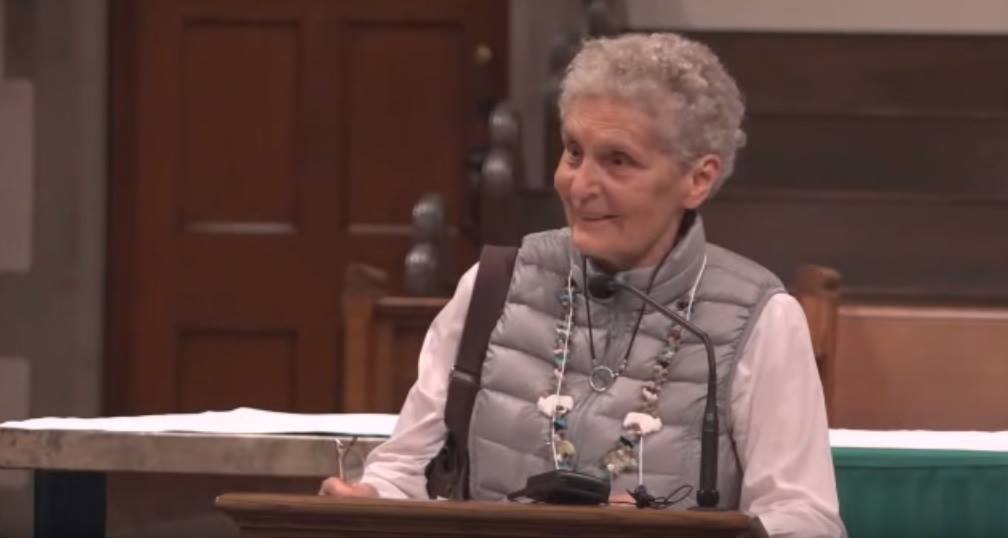
Boyle, who remained friends with Langan over the years, remains particularly grateful for her mentor’s firm belief in experiential learning, calling her a groundbreaker, and says she received far more than she expected from the program.
“I entered St. Mike’s thinking I was going to have a great professor but I also discovered a great friend.”
For Boyle, Langan was someone who took firm stands but had respect for all, someone with impressive “moral fibre.”
Today Boyle is a high school teacher and remains particularly impressed by the new Christianity & Culture graduates she meets as colleagues.
“They are mature and well versed in the history of the teachings of the Church, as well as appreciative of the Church’s beauty.”
Collegium Member Msgr. Sam Bianco knew Dr. Langan from his time as rector of St. Michael’s Cathedral and then as pastor of Corpus Christi Parish in east-end Toronto.
“We would often chat about things theological after Mass,” he recalls. “She spoke of teaching students about ‘critical fidelity’ to their faith and cared not only about the intellectual wellbeing of her students but also about them personally and what was happening in their lives. She was a true woman leader in the Catholic Church.”
Over the years, Dr. Langan was honoured numerous times. In 2006, she and her husband Thomas received papal honours for their contributions to the Church. She was named a Lady of St. Sylvester for her work in the Christianity & Culture Program, as well as for her adjunct work at St. Augstine’s Seminary, while her husband Thomas was made a Knight of St. Sylvester for his work in Catholic education.
In 2016, she was presented with the Catholic Teachers’ Guild Jean-Baptiste de la Salle Award for her work in Catholic education.
The year 2017 saw the introduction in the annual Langan Lecture in Christianity and Culture at St. Michael’s.
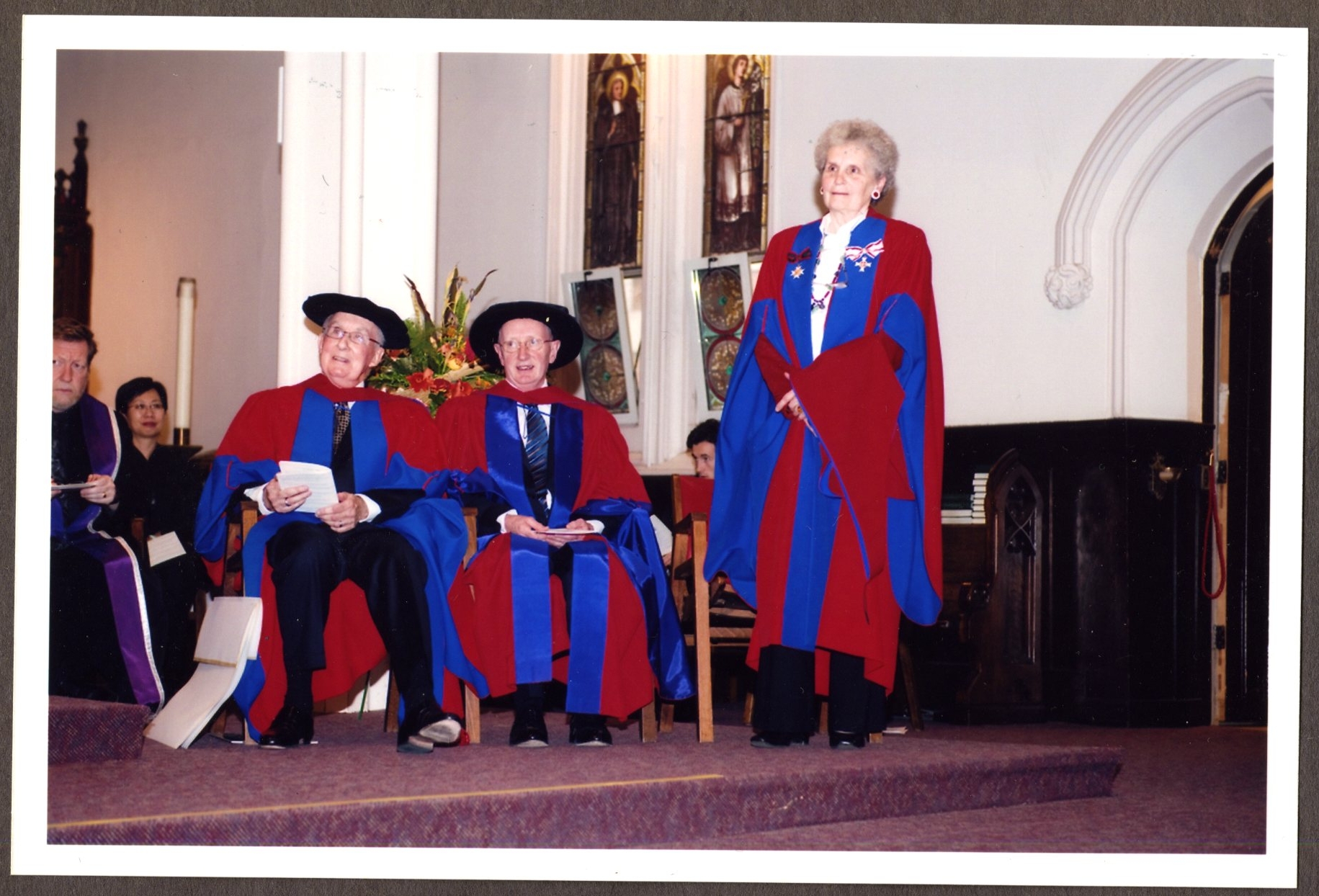
Recently, Dr. Langan noted in a public address that “…at university, you can learn to expand your community from family and friends … to all of mankind.”
Daughter Claire notes that her mother taught right up until her death, serving on the faculty of Mary, Mother of God School in Toronto, an independent Catholic school.
Silano echoes the notion of Langan’s life remaining full.
“Janine…was still volunteering four days a week to teach high school kids at Mary Mother of God school…With one of her book clubs, she had just finished a multi-year reading of the Divine Comedy. People who had been her students four or five decades ago were still on her prayer list and in steady contact with her, seeking her wisdom as they tried to make sense of their mid-life (or later) circumstances.”
Predeceased by Thomas in 2012, Langan leaves five children and 11 grandchildren.
A funeral Mass is to be celebrated on Monday, Dec. 27 at 10 a.m. at St. Basil’s Church.
University President David Sylvester says the University is considering ways to honour Dr. Langan when COVID restrictions ease. Plans will be announced in the coming months.
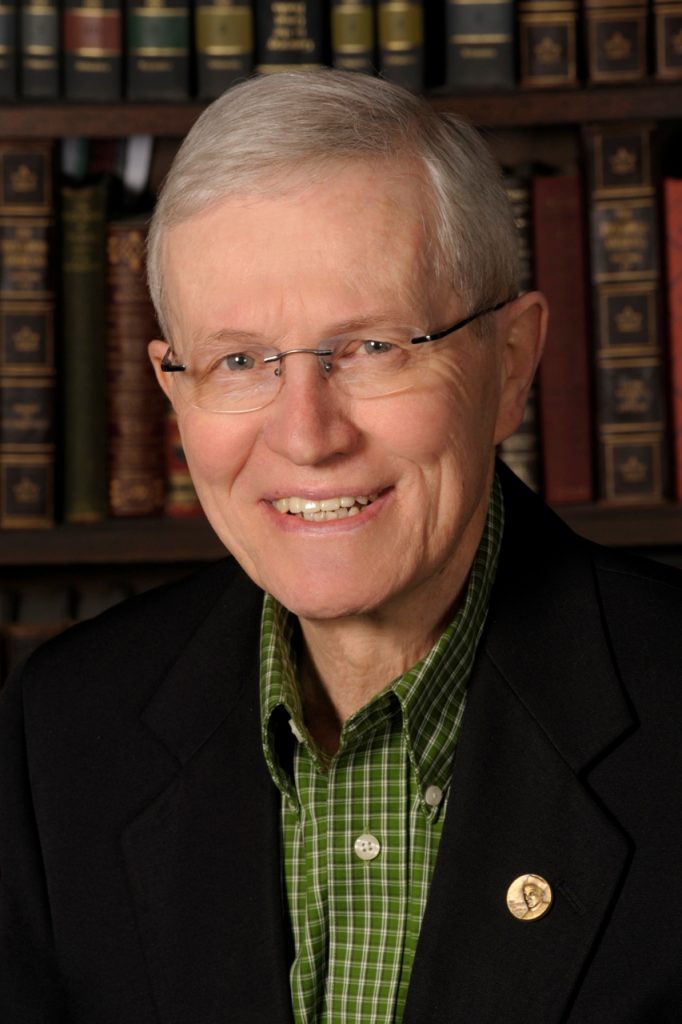
The following reflection was written by St. Michael’s Interim Principal Dr. Mark McGowan.
Though born in Syracuse, NY, Terry Fay had a Canadian heart and served the Catholic community in Canada with grace, dignity, and sensitivity. His parents Hugh Fay and Susan Dunne were from County Cavan, Ireland, and emigrated to the United States from London, England, in 1926. Terry, the only boy among three sisters, was named after his uncle Terry, who had died in a work-related accident in Florida. His early education in Syracuse’s public schools was followed by university studies at Le Moyne College (1949-1953). It was at LeMoyne where he made two important choices: he switched his program of study from Engineering to History and, inspired by his Jesuit professors, decided to join the Society of Jesus.
Terry’s unsuccessful attempt to join the Jesuit Province of New York, after what he described as a “disaster” of an interview, prompted him to take the Provincial’s advice and seek admission to the Jesuit Province of Upper Canada. In 1954, he entered the Jesuit novitiate in Guelph, and the rest is history. He acquired a BA in Philosophy at Gonzaga University in Spokane (1961) and a doctorate at Georgetown University (1971), where he completed a dissertation on the Rush-Bagot Agreement of 1818. He spent the next fourteen years teaching history at the Jesuit-run St. Paul’s College at the University of Manitoba, in Winnipeg. In 1985, the Provincial invited him to Toronto to undertake the research for the planned Dictionary of Jesuit Biography. He soldiered away at research using his office at St. Mary Street as a home base, while teaching part time at St. Augustine’s Seminary. He joined the Canadian Catholic Historical Association in 1986, and for the next thirty-five years served the Association in many executive capacities, including over a decade as Treasurer. He became very good friends with the late Father Ed Jackman, OP, with whom he shared many adventures as they drove to Ottawa annually for meetings of the Historia Ecclesiae Catholicae Canadensis. Earlier this morning, former CCHA President, Dr. Peter Meehan, wrote that “I also have so many happy memories of Terry and Ed [Jackman] together – there is something poetic about them passing within months of each other.”
When the dictionary of biography was completed, Terry continued part-time teaching at the Seminary and at the University of St. Michael’s College, in both its undergraduate and graduate divisions. It was his new teaching experiences in Church History at USMC that prompted him to write a survey history of the Catholic Church in Canada, A History of Canadian Catholics: Gallicanism, Romanism, and Canadianism. Published by McGill-Queen’s University Press in 2002, the book remains the standard narrative of the Canadian Church, and a necessary read for all students of religious history in Canada. Terry was not finished. He realized that there were great gaps in his own book, particularly regarding Catholic immigrants to Canada who had recently arrived in Canada. This lacuna prompted Terry to visit the Filipino, Chinese, Korean, Tamil, and Vietnamese communities across Canada and then travel to Asia to research the Catholic origins of these many new Catholic Canadians. The result of Terry’s labours was The New Faces of Canadian Catholics: The Asians, published by Novalis in 2009. In addition to his many articles published in CCHA Historical Studies, Terry completed his third monograph, Canadian Catholic Spirituality: Saints and Sinners over 400 Years, published by Tellwell (Victoria) in 2021. In 2014, at its annual meeting at Brock University, the CCHA awarded Terry its highest honour, the George Edward Clerk Medallion, for distinguished contributions to the writing of the history of the Catholic Church in Canada.
His passing on Sunday, September 5, in Pickering, Ontario, has come as a shock to many who knew and loved him, particularly parishioners at Our Lady of Lourdes Parish in Toronto and its Jesuit community, members of Canada’s Filipino and Chinese communities, his extended family members to whom he was unofficial chaplain, and to his colleagues in the CCHA.
This past spring, during the pandemic, Terry wrote his short memoires and, as had been his practice, gave it to me for editing and suggestions. I was deeply moved by his life story, and his writing confirmed in me his gentleness, empathy, and personal humility. He wrote: “These memoires do not necessarily document the Jesuit ideal of the ‘magis,’ always seeking the highest good in the service of God but explain the service of God in an ordinary way.” Terry was far from ordinary, although his personal humility would not let him see himself otherwise. May he rest in peace; we have lost an “extraordinary” friend and colleague.
The following reflection was written by St. Michael’s Interim Principal Dr. Mark McGowan.
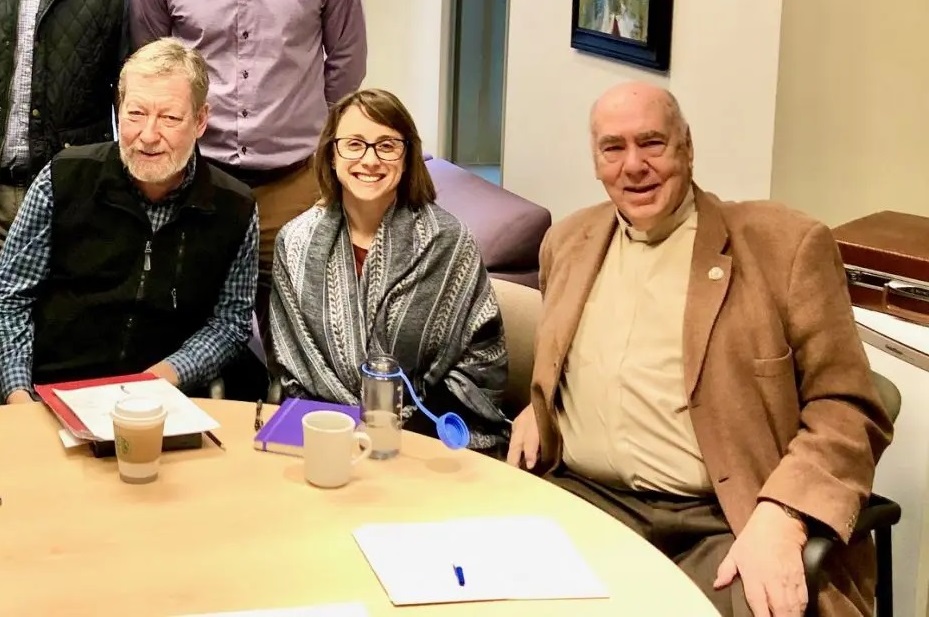
In the biography of Newton Wesley Rowell, the former leader of the Ontario Liberal Party, there is a photograph taken of Rowell, in 1940, with his infant grandson in his arms. The baby in question was Edward Jackman, the newest addition to the family of entrepreneur Henry Jackman and Mary Coyne Rowell. The Rowells had been scions of the Methodist Church and later, in 1925, joined the United Church of Canada. Ed was educated at Upper Canada College and, in the family tradition, at Victoria College, in the University of Toronto. He was an avid outdoorsman, football player, and opera lover. But he also wrestled deeply with his spirituality. He eventually left the United Church and became a Roman Catholic. He taught briefly at Woodroffe Secondary School in Ottawa before beginning his journey to become a Catholic priest and a member of the Dominican religious order (Order Preachers). He served as a librarian for the Dominican missionary order in Nigeria, but before he was able to complete his work, he contracted malaria and had to return to Canada.
His love of the humanities, performing arts, and history in particular led to his active engagement in the Canadian Catholic Historical Association. As the CCHA struggled in the late 1970s, Father Ed gave generously to the Association’s upkeep and eventually served as its President from 1980-1982. After serving two more years as President General, he assumed the new permanent position of Secretary General and was aided in this work by Evelyn Cronin O’Neill, Florence Fecteau, and more recently Valerie Burke. His work gave structure to the association’s programs, annual meetings, special conferences, and publications, while ensuring that the Association was placed on sound financial footing. In 2000, he was the deserving recipient of the George Edward Clerk Medallion, given biannually for distinguished service to the writing of the history of the Catholic Church.
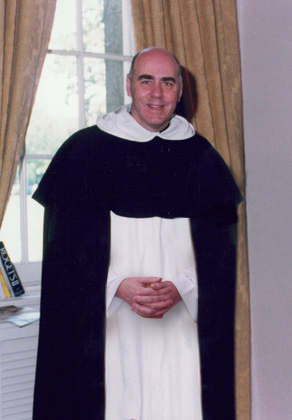
His passion for supporting others in the writing of history, particularly religious history, was boundless. Always mindful of his spiritual roots, he became active as a benefactor and participant in the Canadian Methodist Historical Society and was a prominent financial supporter of the Methodist history project culminating with Neil Semple’s seminal The Lord’s Dominion (1996). He was also one of the principal architects and benefactors of the double volumed The Irish in Canada: The Untold Story (1988). The Jackman Foundation also subsidized the publication of two volumes per year in the McGill-Queen’s University Press Studies in the History of Religion Series, which to date has published over 100 volumes, over half of which have benefitted from the largesse of the Jackman Foundation. There are countless young Canadian historians who have been the recipients of Father Ed’s kindness and generosity.
Among his many projects, the University of Toronto was always close to his heart. Both his alma mater Victoria College and the University of St. Michael’s College have been grateful recipients of his generosity. For over thirty years he has supported teaching and learning in SMC’s Celtic Studies Program, the Faculty of Theology, and the Pontifical Institute of Mediaeval Studies. When his health permitted, he was a regular shopper at the annual Friends of the Kelly Library Book Sale, and he was often in attendance at USMC events, conferences, and celebrations. In his last days Kathryn Elton, Director of Advancement, and Interim Principal Mark McGowan, were able to visit Father Ed, via zoom, and express the College’s gratitude for all he has done. We will all miss him. May he rest in peace.

